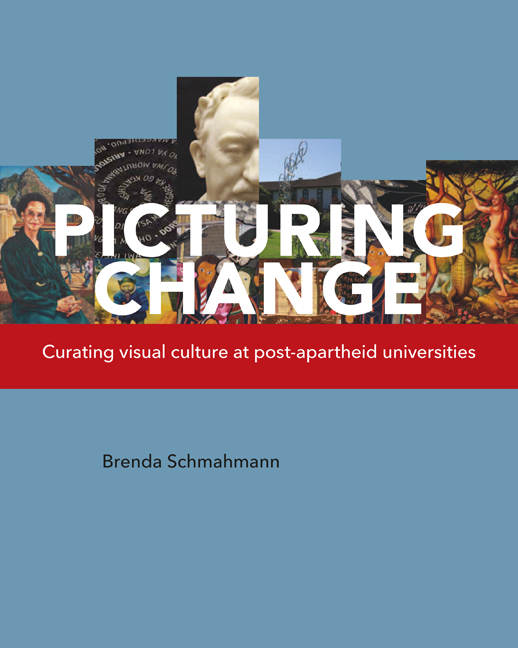3 - New art acquisitions
Published online by Cambridge University Press: 21 March 2018
Summary
Willem Boshoff's Circle of Knowledge (2000) at the entrance to the University of Johannesburg's Auckland Park campus, explored in the Introduction to this study (see Figures 1–7), is one of a number of artworks acquired for prominent sites and contexts at South African universities in the post-apartheid period. Articulating values and ideals that viewers are encouraged to associate with the institutions for which they serve as keynote pieces, the images and objects discussed in this chapter can be interpreted in light of endeavours by universities to transform themselves into arenas welcoming of cultural diversity.
But works of this type are also bound up with the impact of social change on constructions of identity. As Ivan Vladislavić (2000) explained in the introduction to a book on Cyril Coetzee's T'kama-Adamastor, one of the works examined in this chapter, South Africans are ‘groping towards new definitions of themselves, new understandings of their place in their elusive new culture and on the continent’. Hardly surprisingly, artworks acquired by universities in the post-apartheid years tend to speak of a society conscious of the need to reinvent itself.
In many of the works I discuss in this chapter, the impact of poststructuralist and postmodernist ideas about the relativity of truth are discernible, as are concerns with the complexity and instability of identities. An impetus to recognise indigenous knowledge systems is also often apparent and, while affirming and granting agency to groups and individuals who were formerly denied opportunity, such articulations are sometimes simultaneously infused with a postmodernist scepticism about the authority of dominant narratives. Likewise, works are sometimes shaped in significant ways by a postmodernist focus on the potentials of parody to construct evaluative commentary.
The majority of artists whose works I discuss in this chapter operate in non-traditionalist paradigms, and consciously resist the bombast and idealisations that have been associated historically with public art. Nevertheless, it would be wrong to convey the impression that all new art acquired by universities has consistently resisted conservatism. The portrait bust, for example, continues to be a representational mode of choice at some institutions. In this chapter, I consider some of the difficulties that can emerge when this form is used to represent icons of the liberation struggle.
- Type
- Chapter
- Information
- Picturing ChangeCurating visual culture at post-apartheid universities, pp. 105 - 150Publisher: Wits University PressPrint publication year: 2013



